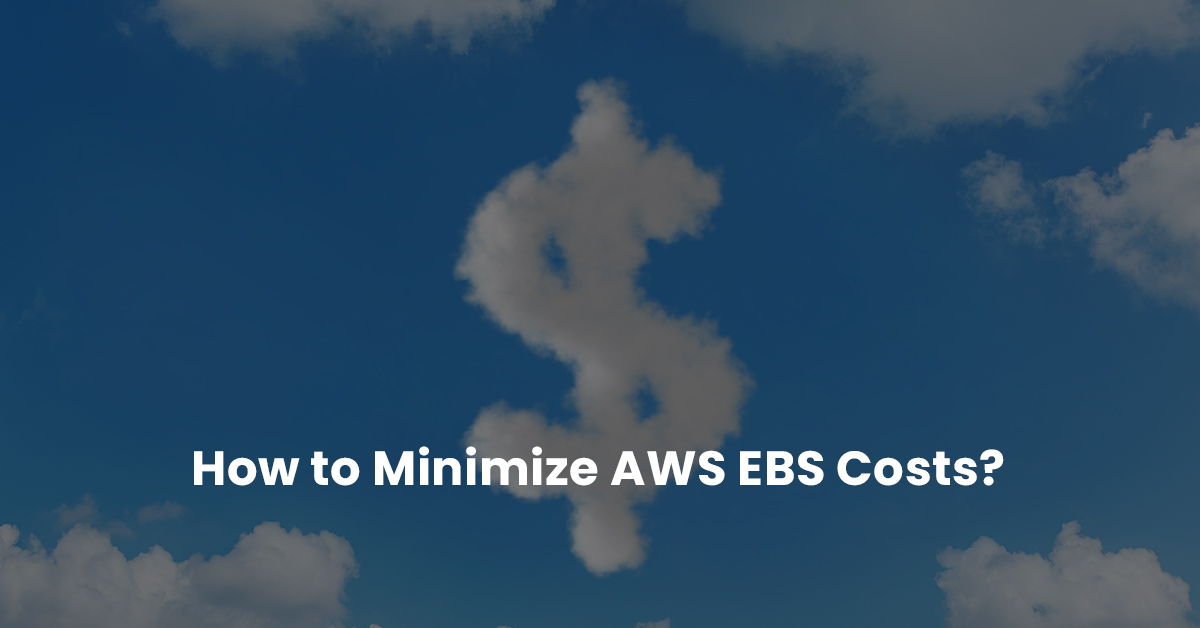AWS (Amazon Web Services) EBS costs contribute to a large percentage of your cloud bill. Knowing how to utilize your storage services is imperative to lower spending for your company.
Amazon Elastic Block Storage (EBS) is a scalable, high-performance block storage service designed for AWS EC2 (Elastic Compute Cloud). It is a persistent way to store your data with EBS volumes.
The best thing with AWS volumes is that you only pay for what you use. EBS volumes are divided into two main categories:
- HDD-backed storage for throughput intensive workloads
- SSD-backed storage for transactional workloads
SSD volumes are divided into two: EBS Provisioned SSD for the most demanding applications and General Purpose SSD for transactional applications. HDD (Hard Disk Drive) volumes are also divided into two; Cold HDD for less frequently accessed data and Throughput Optimized HDD for frequently accessed data.
EBS volumes attached to EC2 Instances retain information, accruing considerable costs in the process. Thanks to this article, you will learn how to minimize EBS costs and reduce your AWS spending.
Select the Right EBS types
Each of the EBS volumes comes with different pricing and performance levels. To land the best EBS volumes, you have to consider the following factors:
- Capacity
- Application throughput
- Input/output operations per second (IOPS)
The General Purpose SSD volumes are the most popular of the four. It is advisable to start with the General SSD volumes unless the application requires over 10,000 IOPS. In case the volume is intensively utilized, you can switch to Provisioned IOPS SSD.
If you are working on applications that read or write large volumes of sequential data, you can consider HDD storage. Both Cold and Throughput HDD volumes are over 50% cheaper than SSD storage. It is beneficial if you keep persistent data inside EBS.
Rightsize RDS Volumes
RDS databases are highly customizable and powerful. However, they are among the most expensive AWS resources and have a relatively complex pricing model. RDS databases backup each storage volume and are stored depending on the retention period.
It’s essential to downsize instances with less than 50% CPU utilization to lower instance classes to minimize your EBS costs.
Continuous EBS optimization

Delete Unattached EBS Volumes
One of the easiest ways to minimize EBS costs is to identify and delete unattached volumes. After stopping or terminating EC2 Instances, the attached block volumes keep running, accruing costs. You should find the unattached EBS volumes and identify whether they are necessary or not. Ideally, you should delete volumes that are in non-production and those that you haven’t used in a month or longer.
It’s advisable to create a backup copy of the EBS volume before deleting it. By creating a backup copy, you can quickly restore the volume later in case you need it.
Also, you can automate the deletion of EBS volumes after termination. Automation makes it possible to remove EBS volumes attached to EC2 Instances immediately after termination. While this avoids keeping unattached volumes, you should do so with caution as you might lose valuable EBS volume data. Here’s an excellent guide on how to remove any unattached EBS volumes.
Delete Old Snapshots
Snapshots are backup copies for deleted EBS volumes. Snapshots, some of which might never be needed, are often forgotten and could end up costing you $0.05/GB each month. It’s best to periodically review all snapshots and delete the ones you may never need.
The Bottom Line
It’s imperative to focus on the above strategies, to optimize AWS EBS costs and storage performance. It’s all about aligning your infrastructure with the organization’s performance requirements and capacity. Regardless of the method you choose, you should achieve huge cost savings.
nOps helps manage instances and EBS volumes seamlessly. It allows you to identify the EBS volumes driving up costs so you can know how to rightsize your infrastructure.
Schedule a nOps demo, or start your free trial today!




